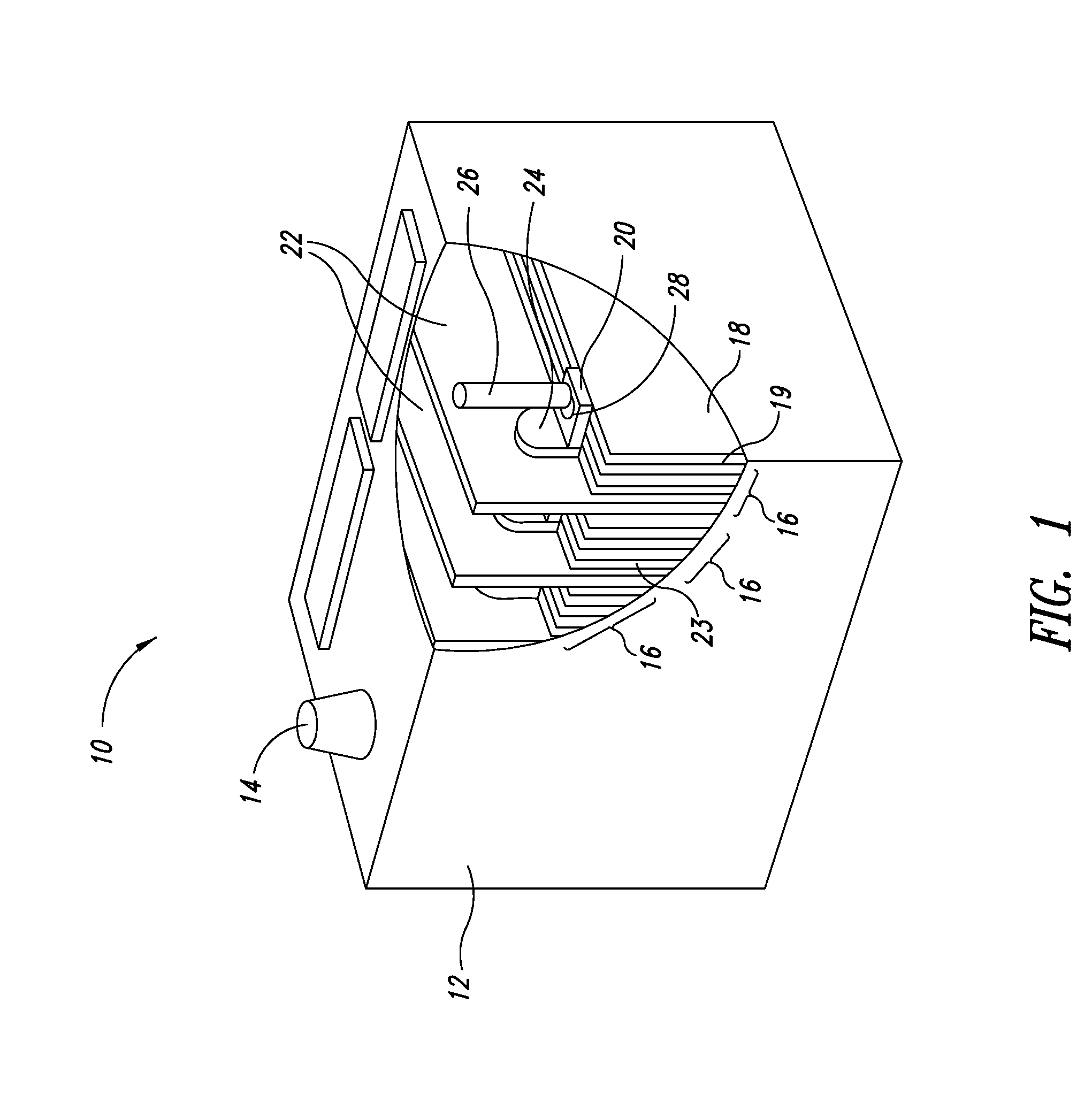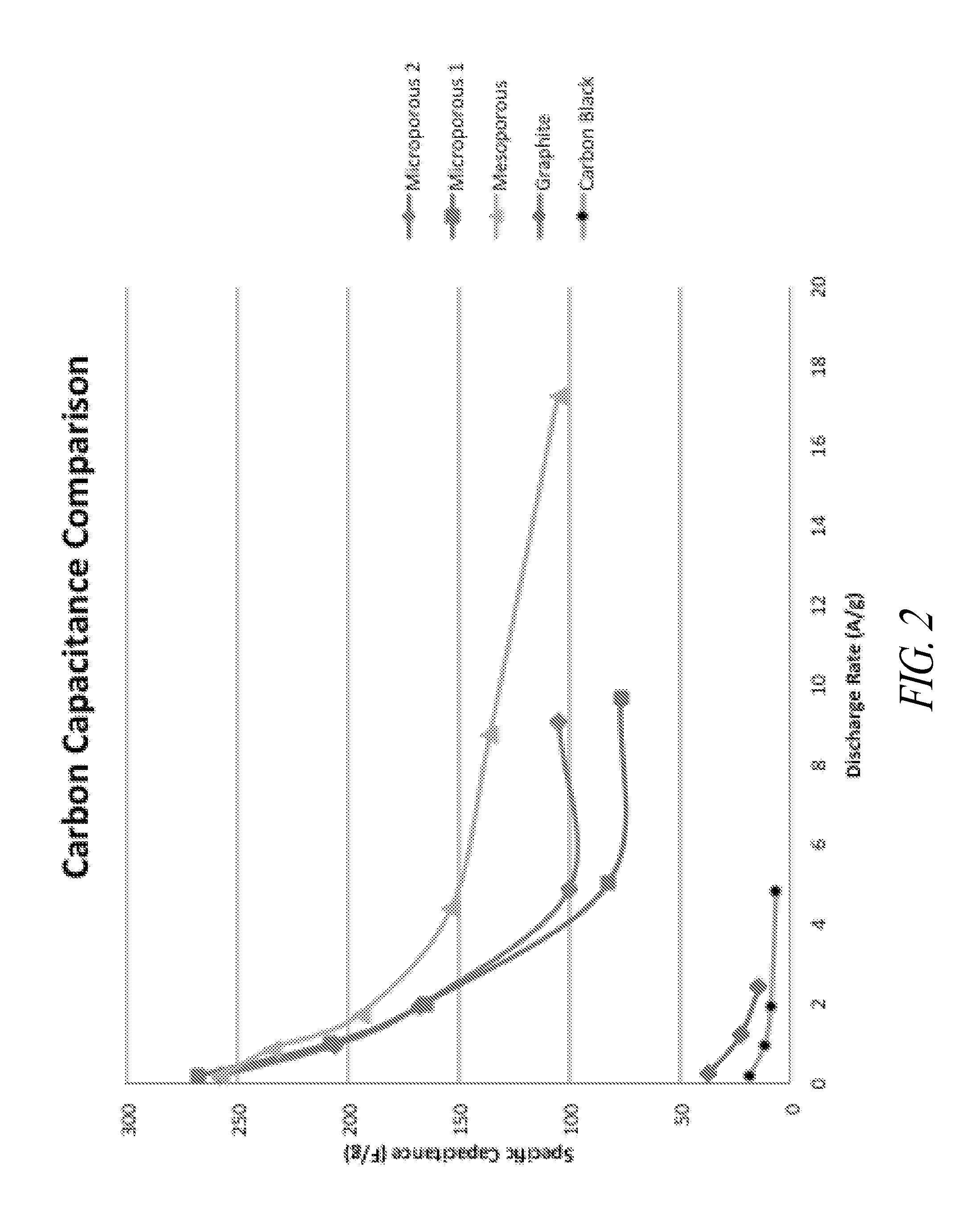Carbon - lead blends for use in hybrid energy storage devices
- Summary
- Abstract
- Description
- Claims
- Application Information
AI Technical Summary
Benefits of technology
Problems solved by technology
Method used
Image
Examples
example 1
Preparation of Dried Polymer Gel
[0284]A polymer gel was prepared by polymerization of resorcinol and formaldehyde (0.5:1) in water and acetic acid (75:25) and ammonium acetate (RC=25, unless otherwise stated). The reaction mixture was placed at elevated temperature (incubation at 45° C. for about 6 h followed by incubation at 85° C. for about 24 h) to allow for gellation to create a polymer gel. Polymer gel particles were created from the polymer gel and passed through a 4750 micron mesh sieve. The sieved particles were frozen by immersion in liquid nitrogen, loaded into a lyophilization tray at a loading of 3 to 7 g / in2, and lyophilized. The time to dry (as inferred from time for product to reach within 2° C. of shelf temperature) varied with product loading on the lyophilizer shelf.
[0285]The surface area of the dried polymer gel was examined by nitrogen surface analysis using a Micrometrics Surface Area and Porosity Analyzer (model TriStar II). The measured specific surface area u...
example 2
Preparation of Pyrolyzed Carbon Material from Dried Polymer Gel
[0287]Dried polymer gel prepared according to Example 2 was pyrolyzed by passage through a rotary kiln at 850° C. with a nitrogen gas flow of 200 L / h. The weight loss upon pyrolysis was about 52%-54%.
[0288]The surface area of the pyrolyzed dried polymer gel was examined by nitrogen surface analysis using a surface area and porosity analyzer. The measured specific surface area using the standard BET approach was in the range of about 600 to 700 m2 / g.
[0289]Additional methodologies for preparation of pyrolyzed carbon can be found in the art. These additional methodologies can be employed to obtain pyrolzyed carbon with about 100 to 600 m2 / g specific surface area.
example 3
Production of Activated Carbon
[0290]The pyrolyzed carbon as described in Example 2 was activated in a rotary kiln (alumina tube with 2.75 in inner diameter) at 900° C. under a CO2 flow rate of 30 L / min, resulting in a total weight of about 37%. Subsequently, this material was further activated at 900° C. in batchwise fashion in a silica tube (3.75 inch inner diameter) with 15 L / min CO2 flow rate, to achieve a final weight loss (compared to the starting pyrolyzed carbon) of about 42 to 44%.
[0291]The surface area of the dried gel was examined by nitrogen surface analysis using a surface area and porosity analyzer. The measured specific surface area using the BET approach was in the range of about 1600 to 2000 m2 / g.
[0292]Additional methodologies for preparation of activated carbon can be found in the art. These additional methodologies can be employed to obtain dried polymer gel with about 100 to 600 m2 / g specific surface area.
PUM
| Property | Measurement | Unit |
|---|---|---|
| Fraction | aaaaa | aaaaa |
| Fraction | aaaaa | aaaaa |
| Fraction | aaaaa | aaaaa |
Abstract
Description
Claims
Application Information
 Login to view more
Login to view more - R&D Engineer
- R&D Manager
- IP Professional
- Industry Leading Data Capabilities
- Powerful AI technology
- Patent DNA Extraction
Browse by: Latest US Patents, China's latest patents, Technical Efficacy Thesaurus, Application Domain, Technology Topic.
© 2024 PatSnap. All rights reserved.Legal|Privacy policy|Modern Slavery Act Transparency Statement|Sitemap



